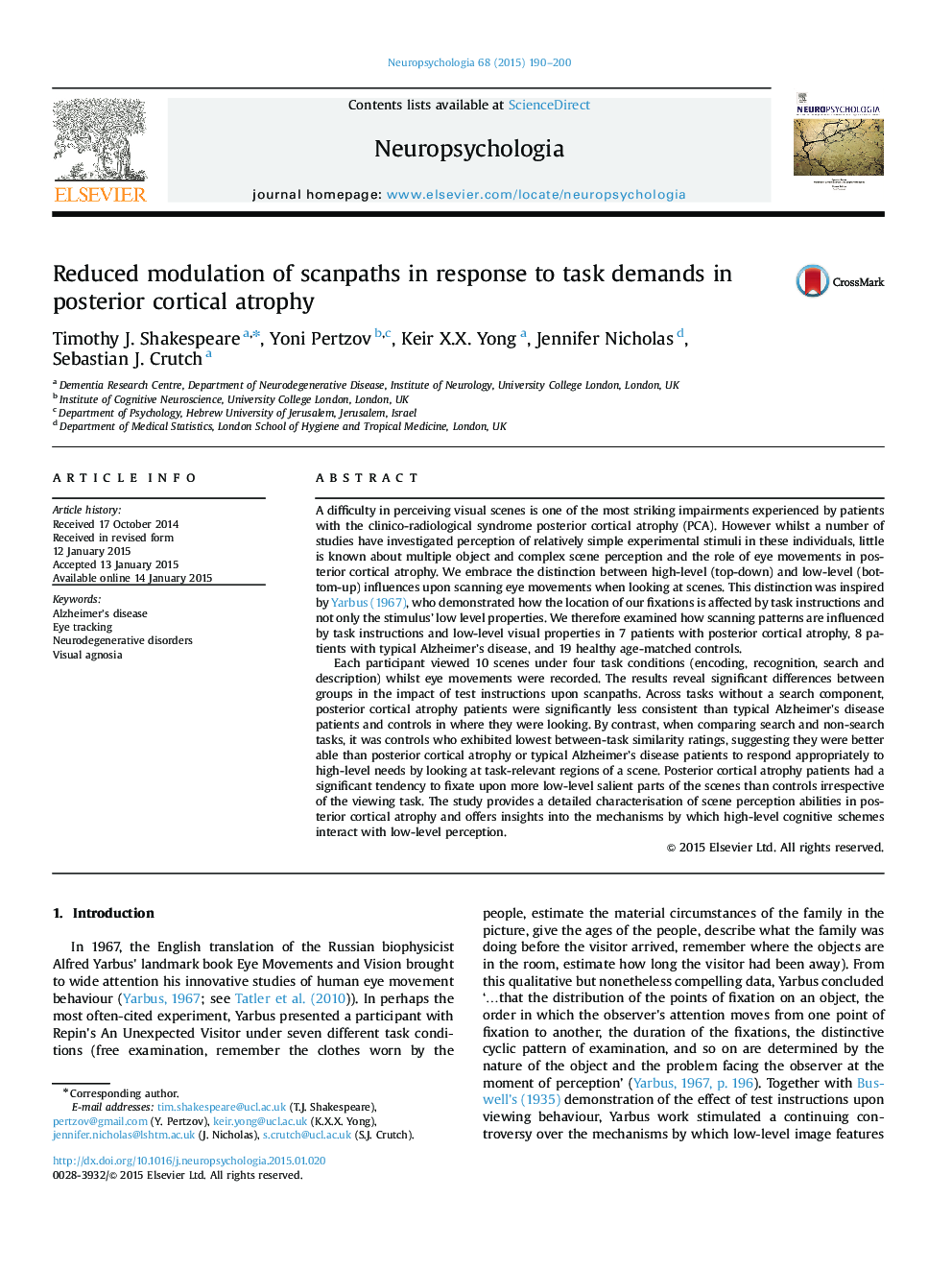| Article ID | Journal | Published Year | Pages | File Type |
|---|---|---|---|---|
| 7320502 | Neuropsychologia | 2015 | 11 Pages |
Abstract
Each participant viewed 10 scenes under four task conditions (encoding, recognition, search and description) whilst eye movements were recorded. The results reveal significant differences between groups in the impact of test instructions upon scanpaths. Across tasks without a search component, posterior cortical atrophy patients were significantly less consistent than typical Alzheimer's disease patients and controls in where they were looking. By contrast, when comparing search and non-search tasks, it was controls who exhibited lowest between-task similarity ratings, suggesting they were better able than posterior cortical atrophy or typical Alzheimer's disease patients to respond appropriately to high-level needs by looking at task-relevant regions of a scene. Posterior cortical atrophy patients had a significant tendency to fixate upon more low-level salient parts of the scenes than controls irrespective of the viewing task. The study provides a detailed characterisation of scene perception abilities in posterior cortical atrophy and offers insights into the mechanisms by which high-level cognitive schemes interact with low-level perception.
Related Topics
Life Sciences
Neuroscience
Behavioral Neuroscience
Authors
Timothy J. Shakespeare, Yoni Pertzov, Keir X.X. Yong, Jennifer Nicholas, Sebastian J. Crutch,
